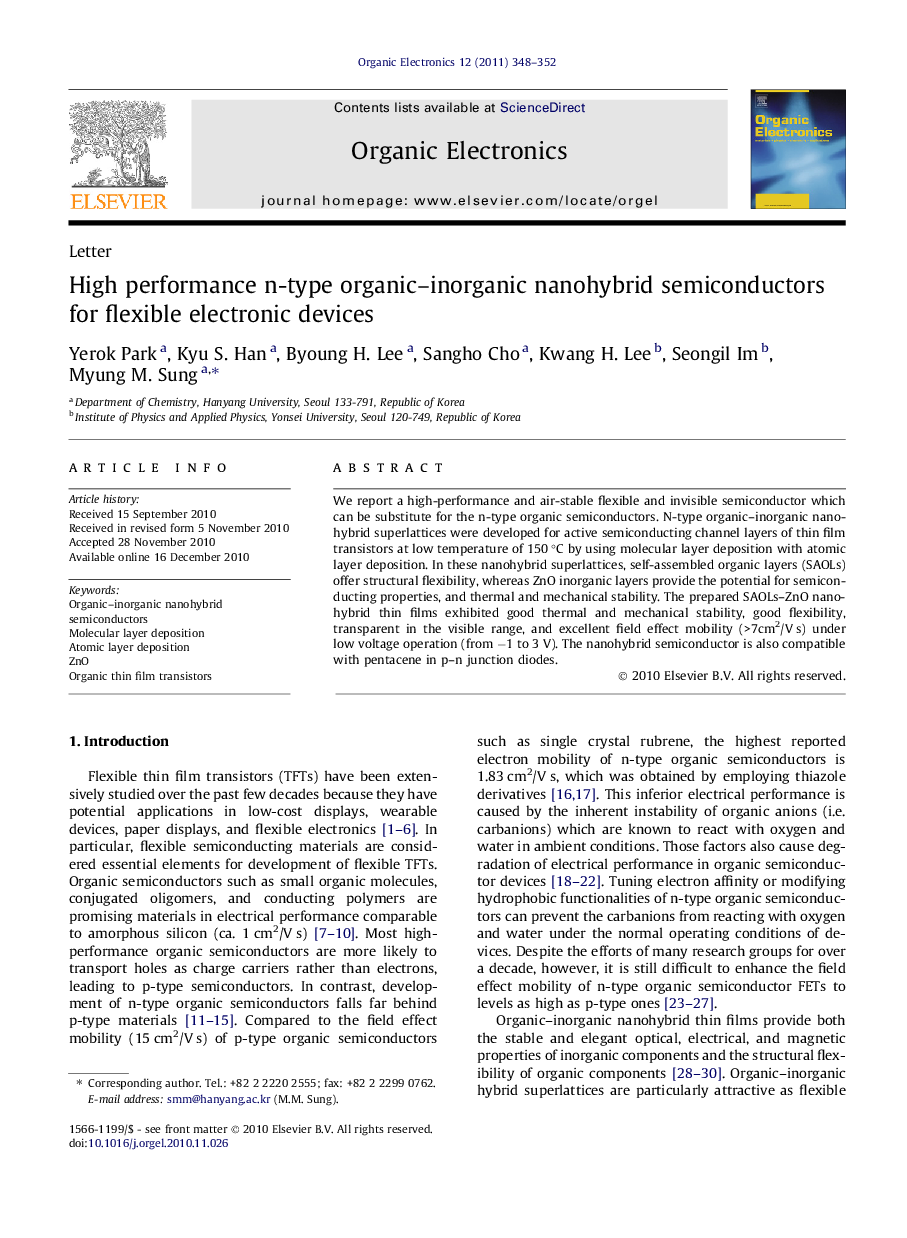| Article ID | Journal | Published Year | Pages | File Type |
|---|---|---|---|---|
| 1264775 | Organic Electronics | 2011 | 5 Pages |
We report a high-performance and air-stable flexible and invisible semiconductor which can be substitute for the n-type organic semiconductors. N-type organic–inorganic nanohybrid superlattices were developed for active semiconducting channel layers of thin film transistors at low temperature of 150 °C by using molecular layer deposition with atomic layer deposition. In these nanohybrid superlattices, self-assembled organic layers (SAOLs) offer structural flexibility, whereas ZnO inorganic layers provide the potential for semiconducting properties, and thermal and mechanical stability. The prepared SAOLs–ZnO nanohybrid thin films exhibited good thermal and mechanical stability, good flexibility, transparent in the visible range, and excellent field effect mobility (>7cm2/V s) under low voltage operation (from −1 to 3 V). The nanohybrid semiconductor is also compatible with pentacene in p–n junction diodes.
Graphical abstractFigure optionsDownload full-size imageDownload as PowerPoint slideResearch highlights► A n-type semiconducting organic–inorganic nanohybrid thin film was developed by using molecular layer deposition with atomic layer deposition. ► The nanohybrid thin films exhibited good thermal and mechanical stability, good flexibility, transparent in the visible range. ► Field effect mobility of these films was >7 cm2/V s in the saturation regime of VD = 3 V.
